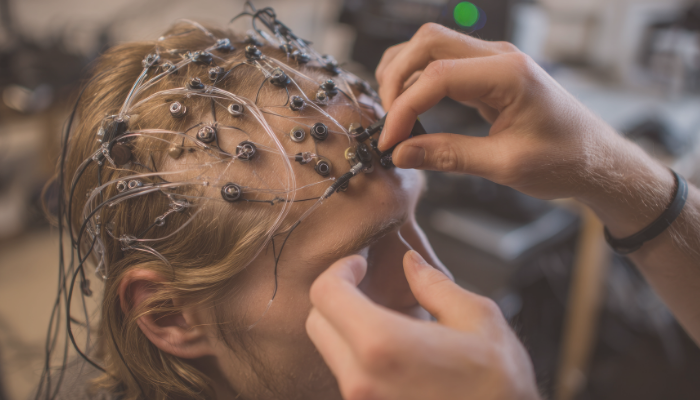Finally, expert neurology care at your fingertips
Neura Health is a comprehensive virtual neurology clinic. Meet with a neurology specialist via video appointment, and get treatment from home.

When a neurologist wants to investigate or rule out seizure activity, ordering an Electroencephalogram (EEG) is usually a key part of the initial workup.
An EEG is a safe, painless test that acts like a microphone for your brain, recording its electrical whispers. Small metal discs (electrodes) are gently placed on your scalp. These electrodes pick up your brain's natural signals, which appear as wavy patterns on a computer. By analyzing these wave patterns, doctors can gain vital insights into your brain’s function and help determine the likelihood of seizure activity.
Your doctor will choose the type of EEG best suited to your specific symptoms (how often your events happen, how clear they are clinically, and your daily routine). It’s helpful to know which kind you’ll be having:

Regardless of the type of EEG ordered, a little preparation goes a long way.
Your EEG may be done in an outpatient facility, an epilepsy unit in a hospital, or even in the comfort of your own home (ambulatory). The process remains generally the same:
The EEG itself is completely painless. You will not feel any electricity or energy from the electrodes. They are only receiving signals, not sending them.
When the test is complete, the electrodes are removed. The sticky residue will wash out easily when you shampoo your hair. You should not feel drowsy and will be perfectly able to drive yourself home.
The final, and most important, step: RELAX and patiently wait for your doctor to contact you with the results and your next steps.
Your Neura care team can help you prep for any diagnostic tests and answer your questions. Members can book twice-monthly coaching visits with one of our care coaches and use the in-app messaging feature to get in touch.
Neura Health is a comprehensive virtual neurology clinic. Meet with a neurology specialist via video appointment, and get treatment from home.
.png)